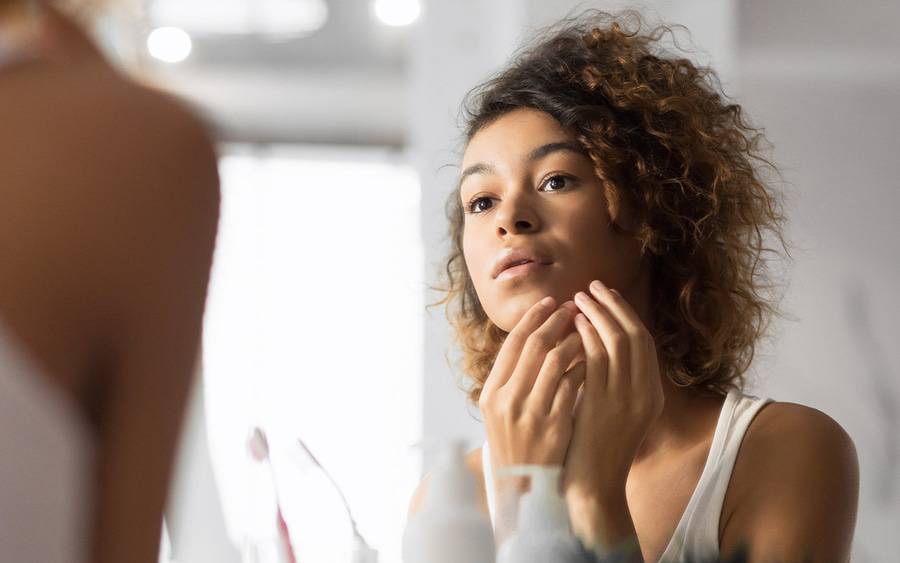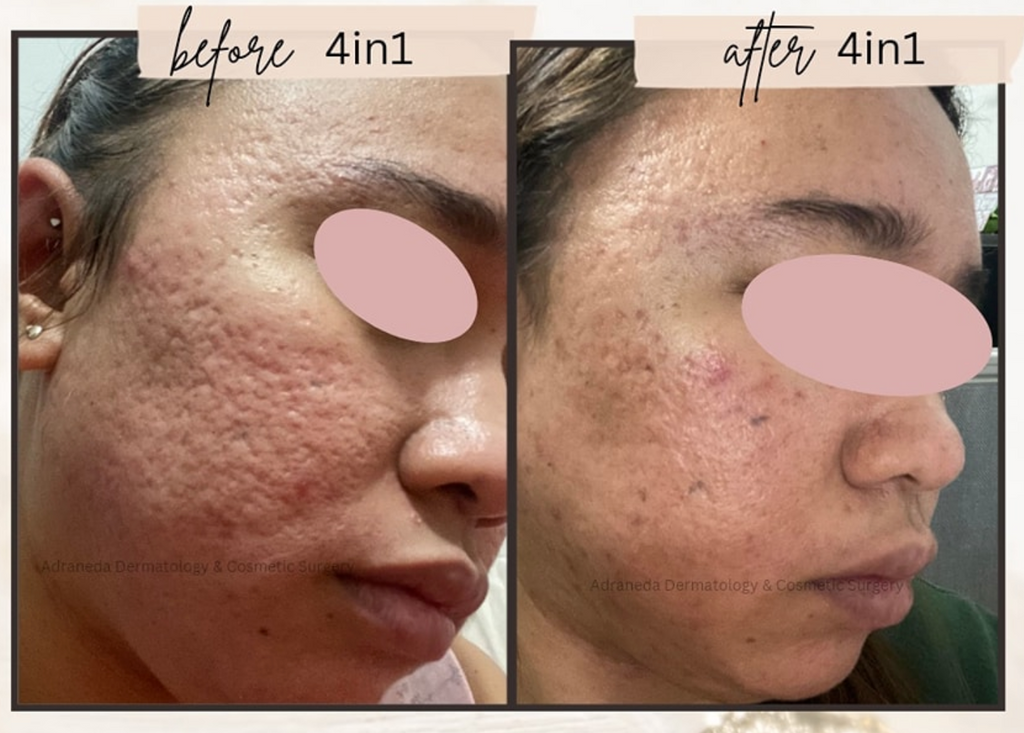Just How to Treat Acne Scars: Proven Techniques for a Remarkable Complexion
Just How to Treat Acne Scars: Proven Techniques for a Remarkable Complexion
Blog Article
Comprehending the Numerous Skin Disease and Effective Therapy Alternatives for Acne Scars
Acne marks stand for an intricate interaction of skin problems that dramatically impact individuals' self-worth and overall skin health and wellness. As we check out the landscape of acne scar administration, it becomes apparent that the trip towards clearer skin might entail more than just topical solutions.
Sorts Of Acne Marks

In contrast, hypertrophic marks arise from an overflow of collagen during the recovery procedure, causing increased areas on the skin. These scars are typically solid and can vary in color, in some cases showing up red or darker than the surrounding skin.
Comprehending these types of acne scars is vital for establishing an efficient therapy strategy - acne scars. Choices might consist of chemical peels, laser treatment, microneedling, or dermal fillers, customized to the details mark type. An extensive assessment with a skin doctor can aid figure out the most ideal treatment, taking right into account the individual's skin kind, mark seriousness, and total skin health
Reasons For Acne Scarring
Marking happens as a result of the body's natural healing response to swelling and injury triggered by acne lesions. When acne kinds, it activates an inflammatory reaction, resulting in the release of different cytokines and growth variables that advertise recovery. This procedure can in some cases lead to extreme tissue formation or insufficient fixing, resulting in marks.
The main reasons for acne scarring include the seriousness of the acne itself, duration of the lesions, and private skin types. Serious inflammatory acne, such as nodules and cysts, is most likely to cause scarring because of much deeper tissue damage. In addition, inappropriate handling of acne lesions, such as picking or squeezing, can worsen tissue injury and inflammation, boosting the likelihood of scarring.
Hereditary proneness additionally plays a substantial duty; people with a family members background of scarring are at a higher danger. In addition, skin kind and color can affect scar development, as darker complexion may experience post-inflammatory hyperpigmentation, while lighter skin may create atrophic scars.
Inevitably, comprehending these reasons is vital in handling acne and alleviating the potential for scarring.

Therapy Choices for Scarring
Effective therapy choices for acne scarring vary depending upon the kind and extent of the marks. Generally classified into atrophic, hypertrophic, and keloid marks, these problems need customized strategies for ideal results.
For atrophic marks, which are identified by a loss of tissue, treatments such as chemical peels, microdermabrasion, and laser treatment are typically employed. These techniques promote skin renewal and boost collagen manufacturing, thus enhancing skin structure. Subcision, a minimally intrusive treatment, can also work by breaking up coarse bands underneath the skin.
Keloid and hypertrophic scars can be much more testing to treat. Choices include corticosteroid shots to minimize inflammation and squash the marks. In some cases, cryotherapy or laser therapy may be advised to lessen their appearance.
Surgical alternatives are readily available for severe scarring, where excision or skin grafting may be required. It's important for people to seek advice Read Full Report from a skin doctor to evaluate their particular scar type and talk about one of the most appropriate treatment strategy. Combining numerous treatments often yields the very best results, ensuring that each patient's one-of-a-kind skin problem is dealt with properly.
Natural Remedy and Natural Solutions
All-natural services and natural home remedy can give an obtainable technique for individuals seeking to boost the appearance of acne scars (acne scars). Various components found in the home kitchen have shown prospective advantages in improving skin appearance and advertising healing

One more effective choice is lemon juice, which acts as an all-natural exfoliant and can lighten hyperpigmentation. It must be utilized carefully, as it might create photosensitivity. Oat meal masks are additionally useful; their gentle peeling can help get rid of dead skin cells while comforting irritation.
Essential oils, such as tea tree oil and lavender oil, can further sustain scar recovery as a result of their antimicrobial properties. It is important to carry out a spot test before using any kind of solution to make certain there are no unfavorable reactions. These natural solutions can be a corresponding strategy in the trip to reduce acne marks.
Avoiding Future Scarring
Adopting a proactive technique to skin care can substantially decrease the risk of creating future acne scars. One of the essential strategies is to manage acne successfully as it arises. This entails utilizing non-comedogenic skin care products and medicines suggested by skin doctors that target acne without aggravating the skin. Regular cleansing, exfoliation, and hydration can aid preserve skin wellness and prevent stopped up pores.
Furthermore, preventing the lure to select or press acne sores is vital, as this can bring about inflammation and subsequent scarring. Rather, people need to concentrate on using topical treatments that promote recovery and decrease inflammation. Components such as salicylic acid, benzoyl peroxide, and retinoids are recognized for their efficacy in handling acne and minimizing scars.
Sunlight security is Click Here one more important component; direct exposure to UV rays can dim scars and hamper healing. Therefore, making use of a broad-spectrum sunscreen daily can minimize these effects - acne treatment for sensitive skin.
Finally, keeping a healthy diet abundant in antioxidants and remaining moisturized supports skin regeneration. By carrying out these precautionary measures, individuals can significantly decrease their threat of future scarring and promote total skin health and wellness.
Conclusion
In conclusion, a detailed understanding of acne marks, incorporating both atrophic and hypertrophic types, is necessary for reliable therapy methods. Consultation with a skin doctor remains necessary to create customized techniques that consider individual skin types and mark extent, ultimately improving the effectiveness of scar management strategies.
Acne scars represent a complicated interplay of skin problems that dramatically impact individuals' self-esteem and general skin wellness. The two key categories of acne scars are atrophic and hypertrophic scars. These scars are further classified right into three subtypes: ice pick scars, which are slim and deep; boxcar marks, which are broader and have well-defined edges; and rolling marks, which produce a wave-like appearance due to unequal skin structure.
A thorough check my reference assessment with a skin doctor can assist determine the most appropriate intervention, taking into account the person's skin kind, mark severity, and general skin wellness.
Examination with a skin doctor stays crucial to design personalized methods that think about private skin types and scar severity, inevitably boosting the efficiency of scar management techniques.
Report this page